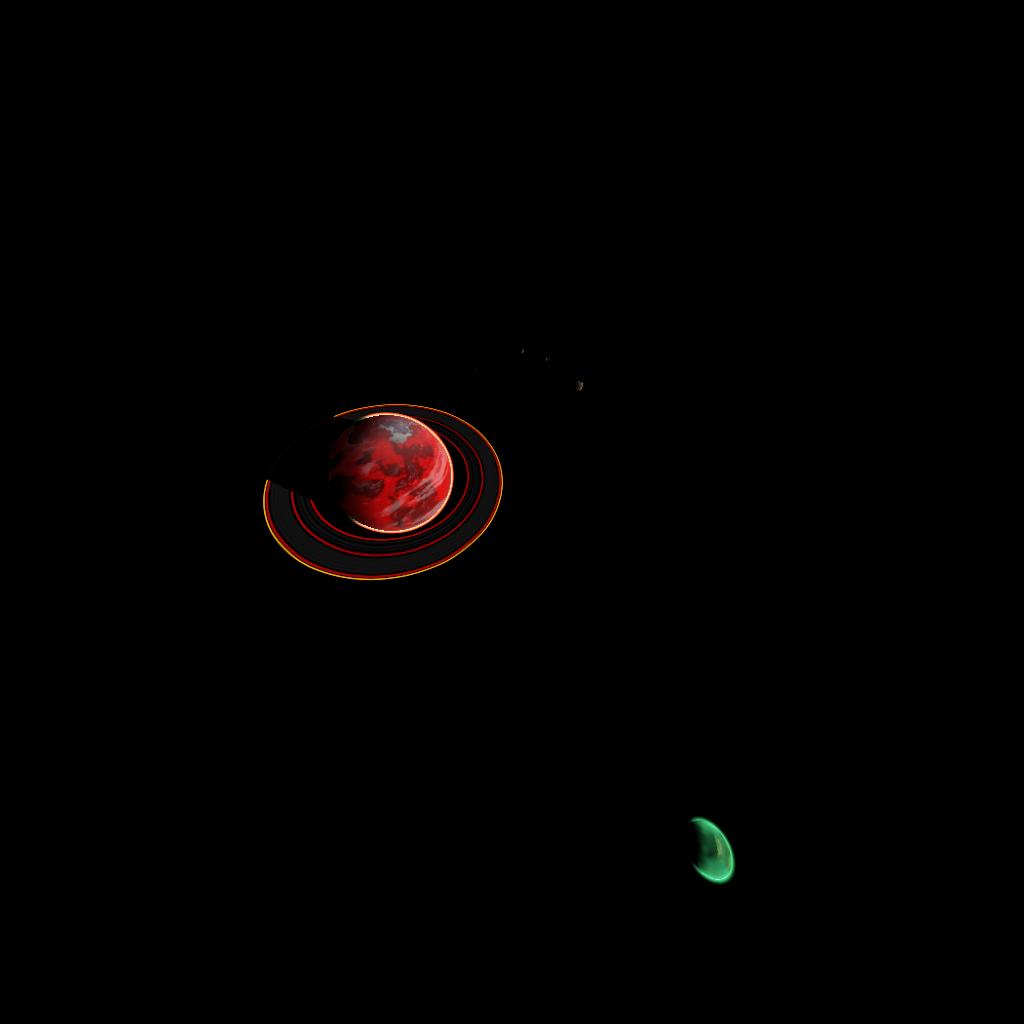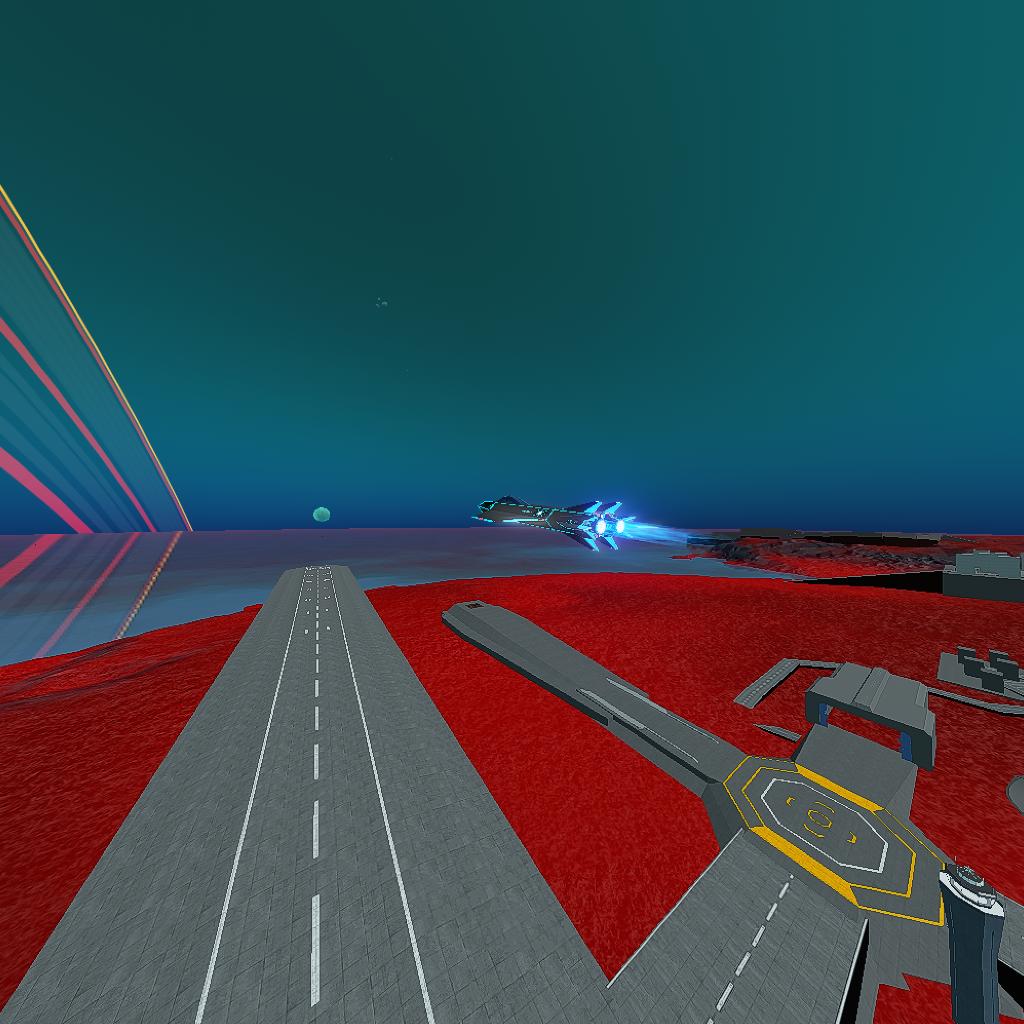A red, habitable planet, and the main base of operations within all of the Mortan System.
Merak is slightly larger than home but is less dense, resulting in a surface gravity of 9.22 m/s^2 (0.94 g). It has a ring system and many interesting moons.
The planet's vegetation has red pigments to absorb Mortan's primary light, alongside standard green chrolophyll in minor amounts. The red pigments are also found in the water. Before drinking said water though, it must first be cleansed of the pigments, as they have been noted to cause headaches and fatigues. Standard, drinkable H2O water can be found in the polar regions, unaffected by these pigments.
Merak was formerly a superhabitable planet candidate, but did not meet certain criteria and now currently provides about the same habitability as our home.
Atmosphere composition:
- 58% N2- nitrogen
- 38% O2- oxygen
- 3% H2O - water vapour
- 1% miscellaneous
GENERAL INFO
- Predecessor: Merak 1.4 (custom rings)
- Successors 2 post(s)
- Created On: iOS
- Game Version: 0.9.918.1
CHARACTERISTICS
- Radius: 1,330 km
- Sea Level: 0 m
- Surface Gravity: 9.2 m/s
- Rotational Period: 14h
- Escape Velocity: 4.95 km/s
- Mass: 2.44E+23kg
Atmosphere
- Height: 114 km
- Scale Height: 17 km
- Surface Air Density: 1.122 kg/m3
- Surface Temperature: 294 K
EQUIRECTANGULAR MAP

3 Comments
- Log in to leave a comment
-
27.4k ZenithspeedPinned 3.3 years ago
(continued later)
The lab was likely built by the same alien species that attempted to mine out Karma. Either due to the flaws of their body structure, or due to their own mistakes, these aliens failed to survive even Merak's life-friendly climate, suggesting that they went completely extinct or fled the Mortan System altogether to colonize another system. Work has started to uncover the mysteries of this species and the lab, but is so far going sluggish due to the lack of funding.
(lore: Yes) -
27.4k Zenithspeed3.3 years ago
it's usually at 90, but sometimes when taking screenshots i set it to max so that more things are visible, there are many times where i simply can't get everything in one picture so i just adjust the FOV to fix that
@Ylias





a lot of things in the "concept version" (most notably the blue water) didn't make it in, but here's a changelog for those interested
GENERAL:
- radius changed from 1650 km to 1330 km (real size 8250 km to 6650 km)
- mildly adjusted biome diversity
ATMOSPHERE:
- new atmosphere shader (after almost half a year of no changes, plus Merak's 1 year anniversary is also around this time!)
- readjusted density for the Yes'th time
- readjusted temperature
STRUCTURES:
- added new AutoCommSat in Desert, Island, and Mountain locations
- removed Valley Splitter track (might've already been removed in 1.4, not sure) and renamed the other one to simply just "Race Track"
EASTER EGGS!
3 new easter eggs added, some with more lore than others. They are not marked on the map, however they are all close to marked map locations.
1. Crashed Plane - A recently crashed passenger airliner. Reports say that both the pilot and copilot snuck on large amounts of alcoholic beverages, and thus "drunk and flew", which caused the accident. Wreck is located near the Desert AutoCommSat. No survivors found, they most likely perished during the high speed impact, and survivors likely couldn't survive the desert heat.
2. Zenith Portal - A portal that Zenith uses to quickly travel from Merak to other locations, offering a great view of the Major Valley. Although his in-lore base would be located here, i didn't bother making it since it would be too tiresome to make, so you only get the portal. Maybe in next update.
3. Marshland Lab - An abandoned lab left in a sunken, marshland-like area very close to MSF. The structure is identified to be a two-story building, with the stories being connected by a sophisticated pressure-difference tube system. The upper story served for simpler experiments but most have been destroyed by the exposure to the Merakian elements. The lower story, located deeper, likely served for more classified things, but the tube connecting the two has been broken apart and is covered in a large amount of rubble, which would take a long time to remove. This is due to the underground section being an estimated 2 km under the surface, and the rubble reaches from the bottom all the way to above sea level. It is likely that the lower story has been completely preserved due to this and the fact that the ventilation system still functions to a degree, showing highly advanced building and craftsmanship skills. (continued later)